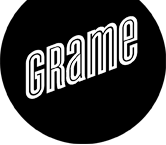Mots clés
audio communication compiler composition dataflow Domain Specific Language DSP ecosystem Elody FAUST functional graphic inscore interaction language lock-free MIDI MidiShare music music score musicale musique operating processing programming real-time score signal synchronization systems
2005 |
|
Fober, Dominique; Letz, Stephane; Orlarey, Yann Real Time Clock Skew Estimation over Network Delays (Technical Report) 2005. (Abstract | Links | BibTeX | Étiquettes: clock, networking, real, skew, time) @techreport{ Fober:05b ,
title = {Real Time Clock Skew Estimation over Network Delays}, author = {Dominique Fober and Stephane Letz and Yann Orlarey}, editor = {Grame}, url = {TR-050601.pdf}, year = {2005}, date = {2005-01-01}, booktitle = {Technical Report – 05-06-01}, abstract = {Clock skew is one of the significant issues of real-time networking. We have previously proposed a new algorithm for clock skew detection that operates one a one-way measurement, simply based on time stamped packets. This algorithm was initially targeted to Internet transport context. It has been showed that it is also suitable to low latency transport conditions using an adequate parameters set. This report presents improvements to the algorithm as well as as well as parameters characterization, along with the corresponding performance measurements.}, keywords = {clock, networking, real, skew, time}, pubstate = {published}, tppubtype = {techreport} } Clock skew is one of the significant issues of real-time networking. We have previously proposed a new algorithm for clock skew detection that operates one a one-way measurement, simply based on time stamped packets. This algorithm was initially targeted to Internet transport context. It has been showed that it is also suitable to low latency transport conditions using an adequate parameters set. This report presents improvements to the algorithm as well as as well as parameters characterization, along with the corresponding performance measurements.
|
2003 |
|
Gaudrain,; Orlarey, Yann A FAUST Tutorial (Technical Manual) Grame, (Ed.): 2003. (Abstract | Links | BibTeX | Étiquettes: audio, block-diagrams, functionnal, processing, programming, real, signal, time) @manual{ Gaudrain:03a ,
title = {A FAUST Tutorial}, author = {E. Gaudrain and Yann Orlarey}, editor = {Grame}, url = {faust_tutorial.pdf}, year = {2003}, date = {2003-01-01}, abstract = {This document presents the language FAUST, its syntax and grammar as well as several commented examples. FAUST (the name stands for Functional Audio Streams) is a programming language specifically designed to develop and implement efficient real time digital signal processors.}, keywords = {audio, block-diagrams, functionnal, processing, programming, real, signal, time}, pubstate = {published}, tppubtype = {manual} } This document presents the language FAUST, its syntax and grammar as well as several commented examples. FAUST (the name stands for Functional Audio Streams) is a programming language specifically designed to develop and implement efficient real time digital signal processors.
|
1991 |
|
Orlarey, Yann Hierarchical Real Time Interapplication Communications (Inproceeding) ICMA, (Ed.): Proceedings of the International Computer Music Conference, pp. 408–415, 1991. (Abstract | Links | BibTeX | Étiquettes: communications, interapplication, operating, real, systems, time) @inproceedings{ Orlarey:91 ,
title = {Hierarchical Real Time Interapplication Communications}, author = {Yann Orlarey}, editor = {ICMA}, url = {ICMC91hier.pdf}, year = {1991}, date = {1991-01-01}, booktitle = {Proceedings of the International Computer Music Conference}, pages = {408–415}, abstract = {Real time interapplication communications are a key feature in musical multi-task operating systems. Independent applications can therefore be connected and collaborate by exchanging messages and data through communication channels. All these collaborating applications define a virtual network the user can dynamically configurate. The topology of such virtual network specifies the way applications can be connected together. This paper introduces a new hierarchical topology we recently implemented in our MidiShare multi-task operating system. This approach offers several advantages and particularly when a large number of applications are involved or in a multi-user context.}, keywords = {communications, interapplication, operating, real, systems, time}, pubstate = {published}, tppubtype = {inproceedings} } Real time interapplication communications are a key feature in musical multi-task operating systems. Independent applications can therefore be connected and collaborate by exchanging messages and data through communication channels. All these collaborating applications define a virtual network the user can dynamically configurate. The topology of such virtual network specifies the way applications can be connected together. This paper introduces a new hierarchical topology we recently implemented in our MidiShare multi-task operating system. This approach offers several advantages and particularly when a large number of applications are involved or in a multi-user context.
|

